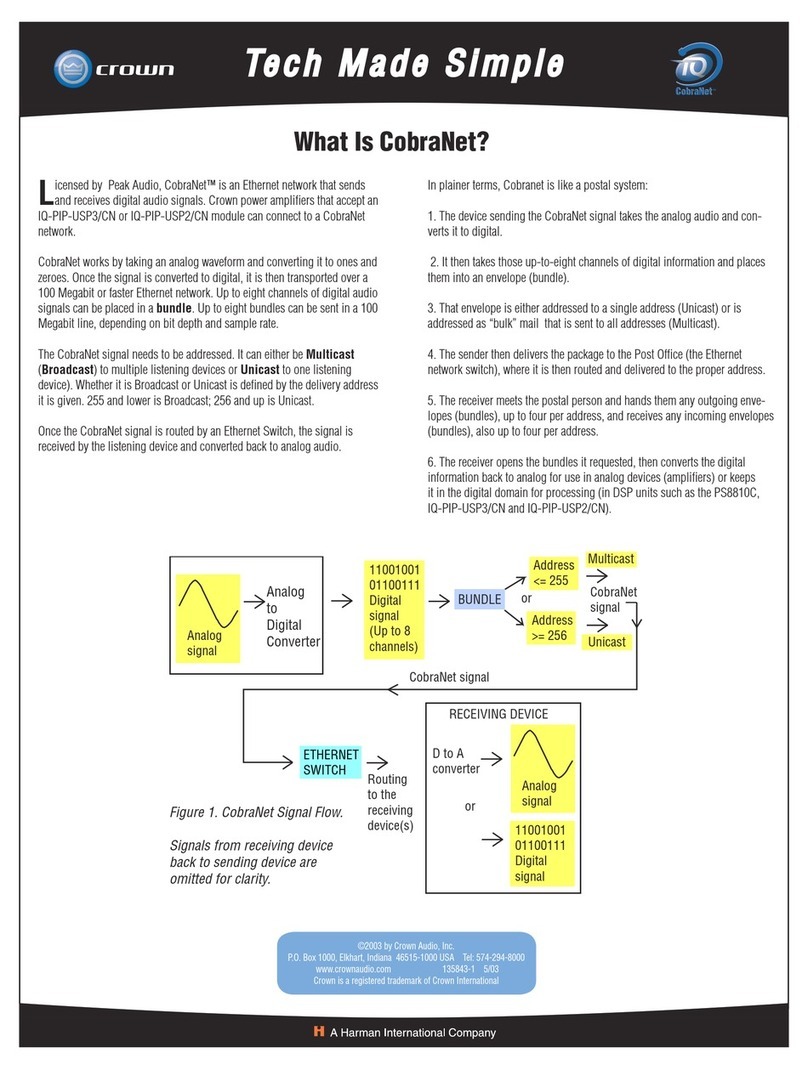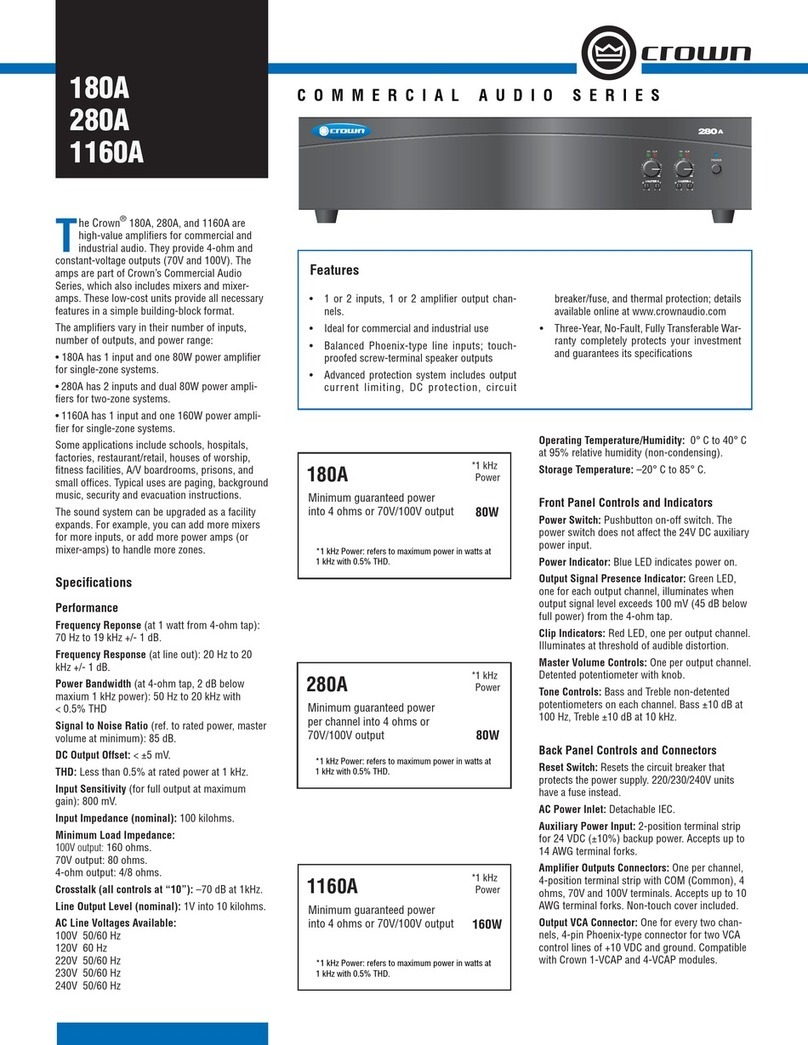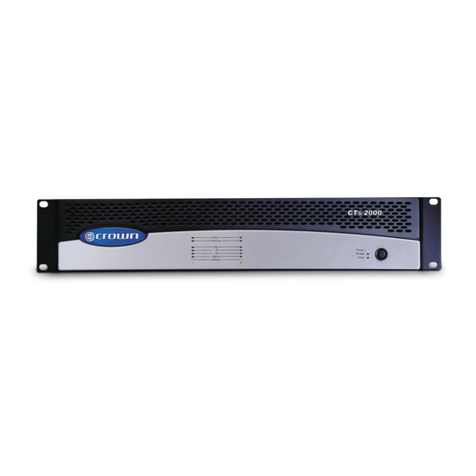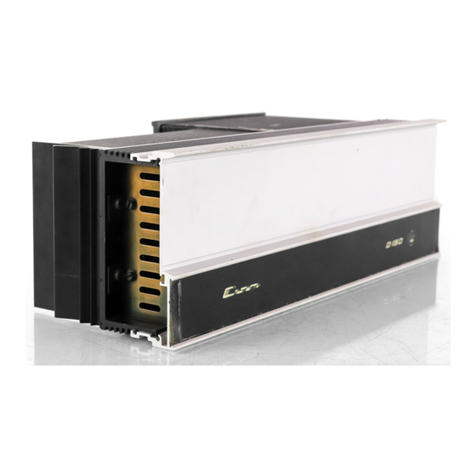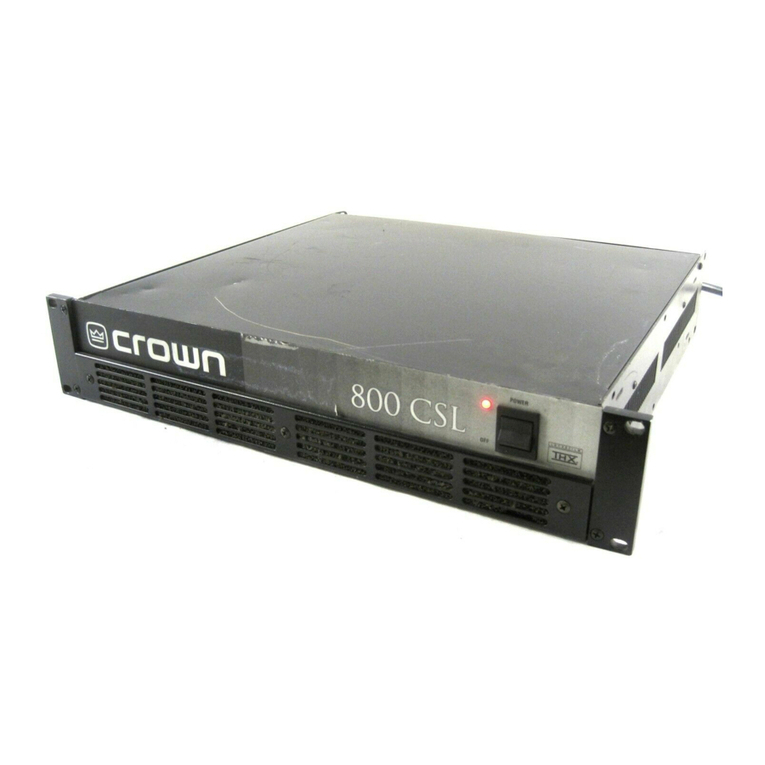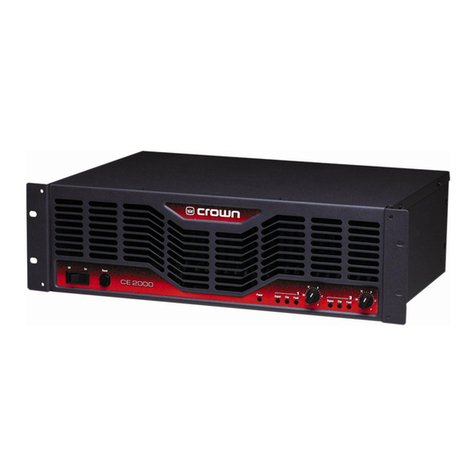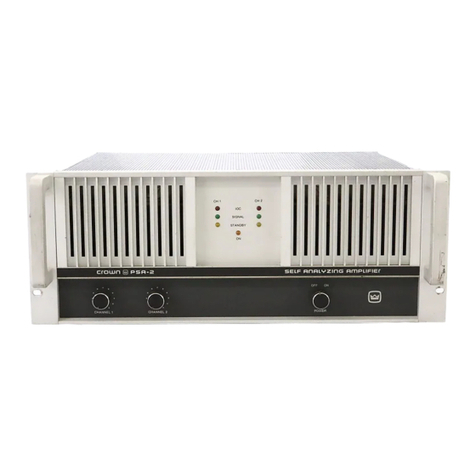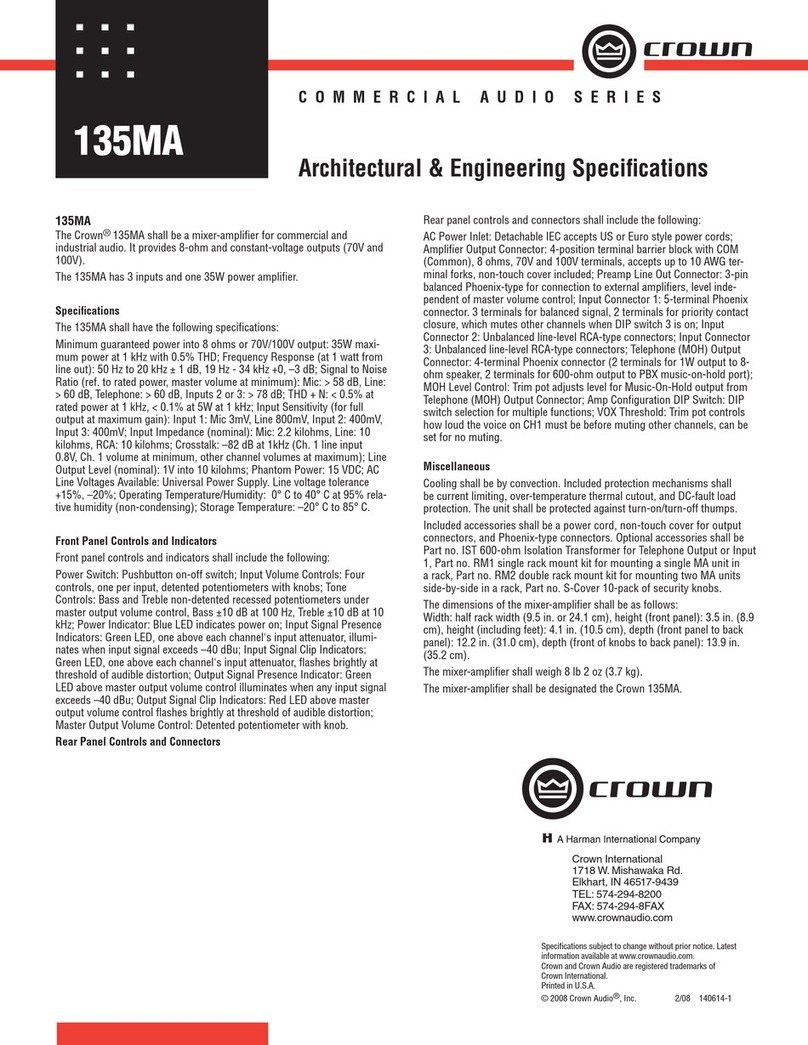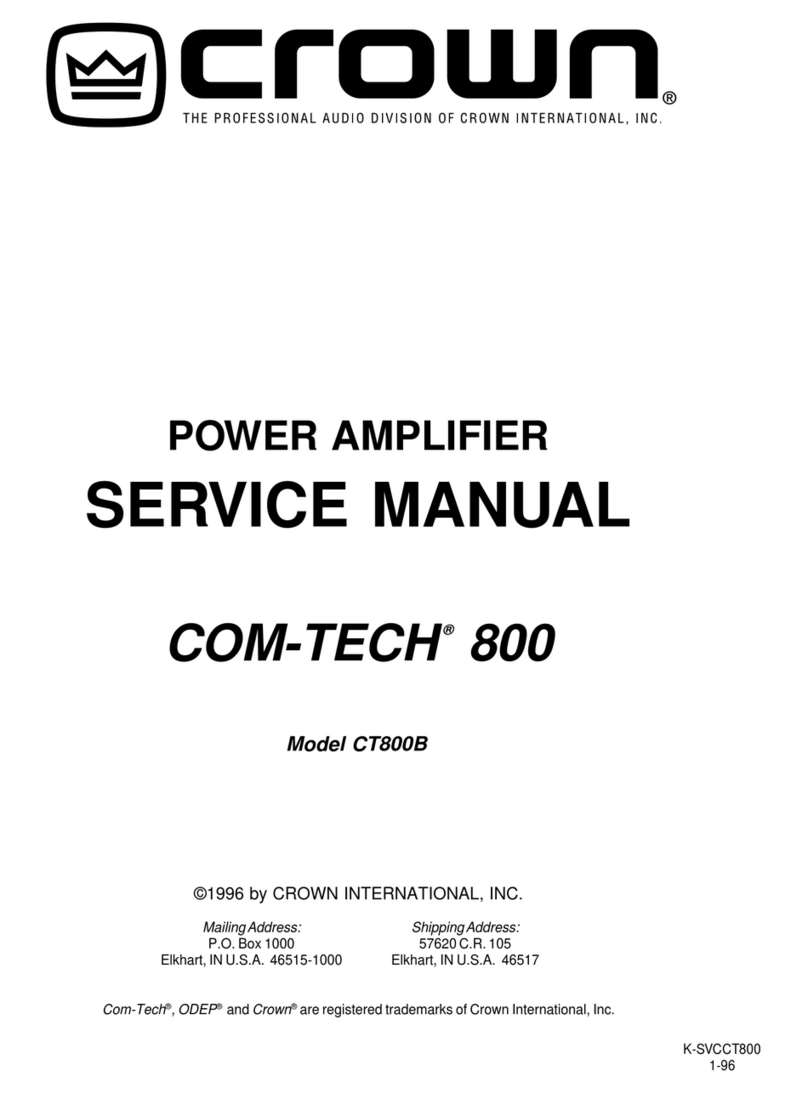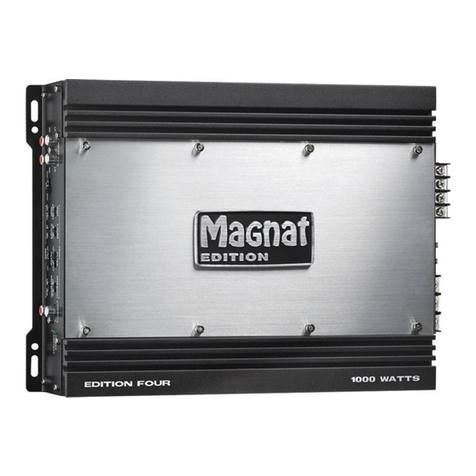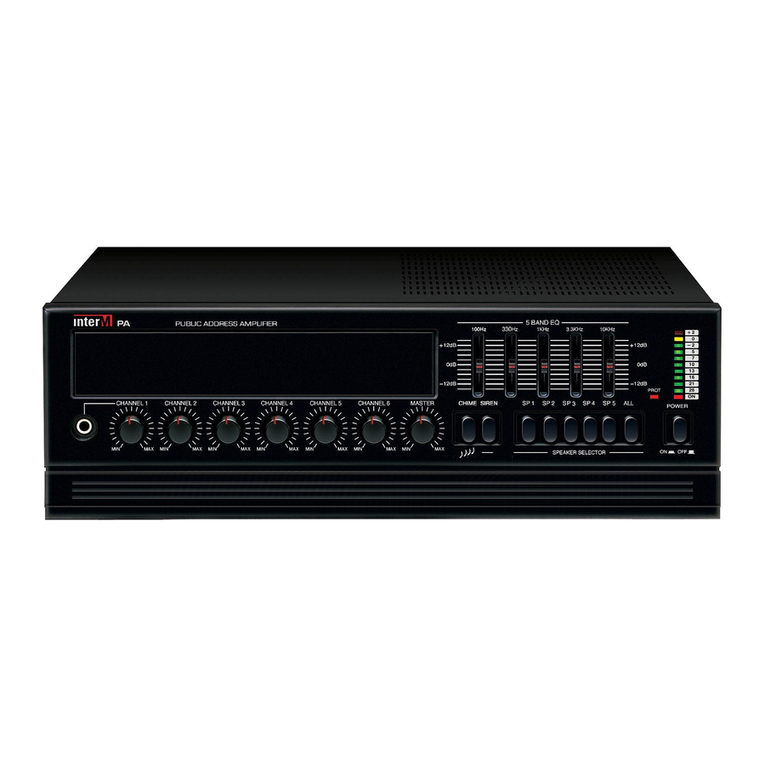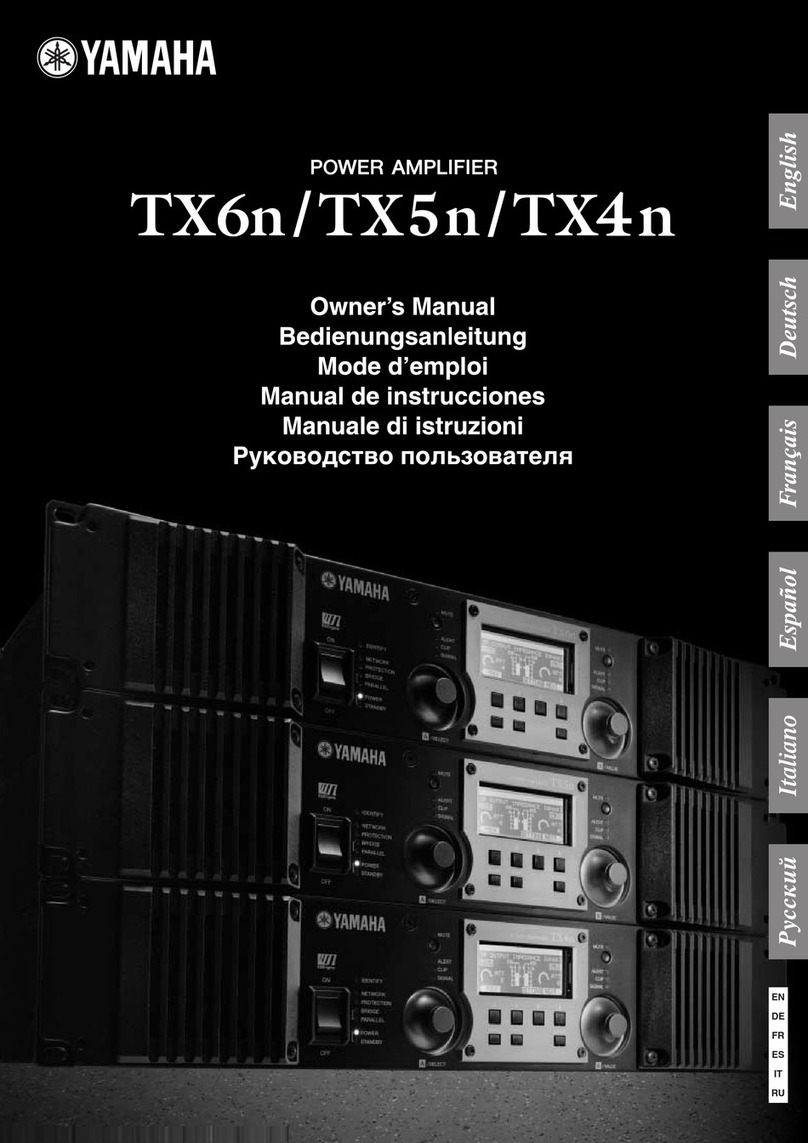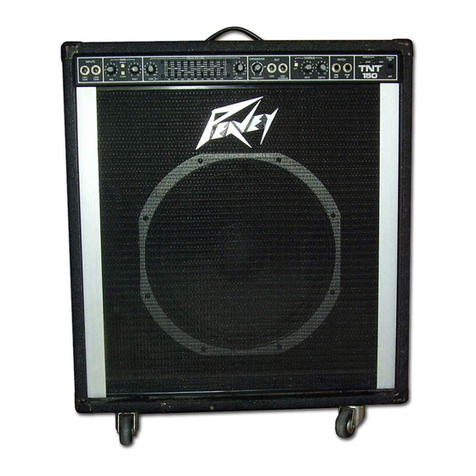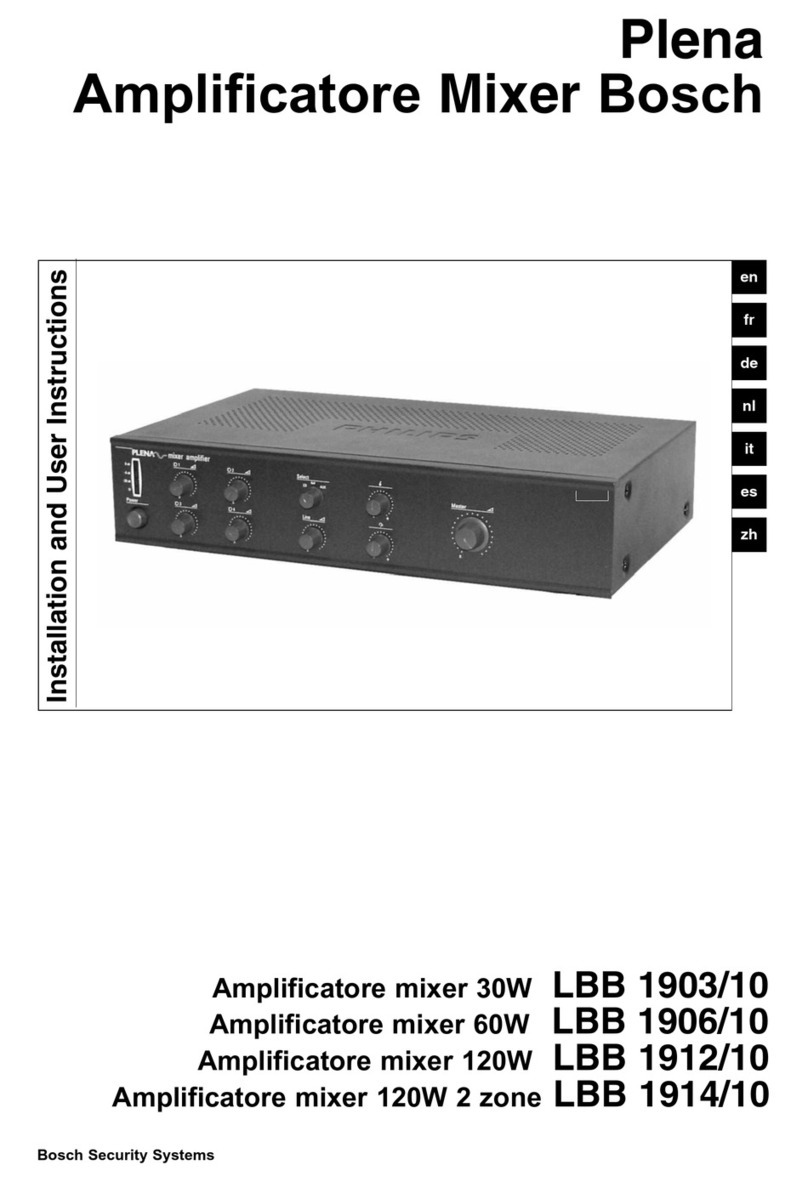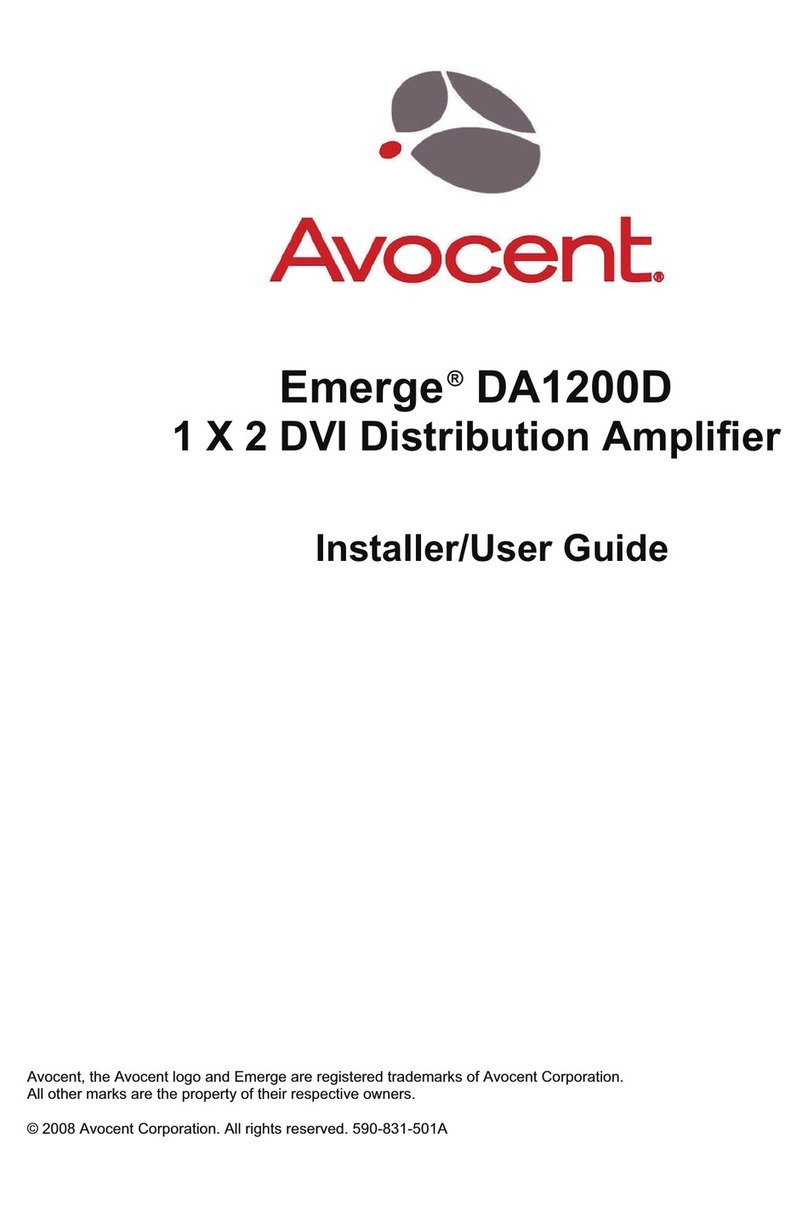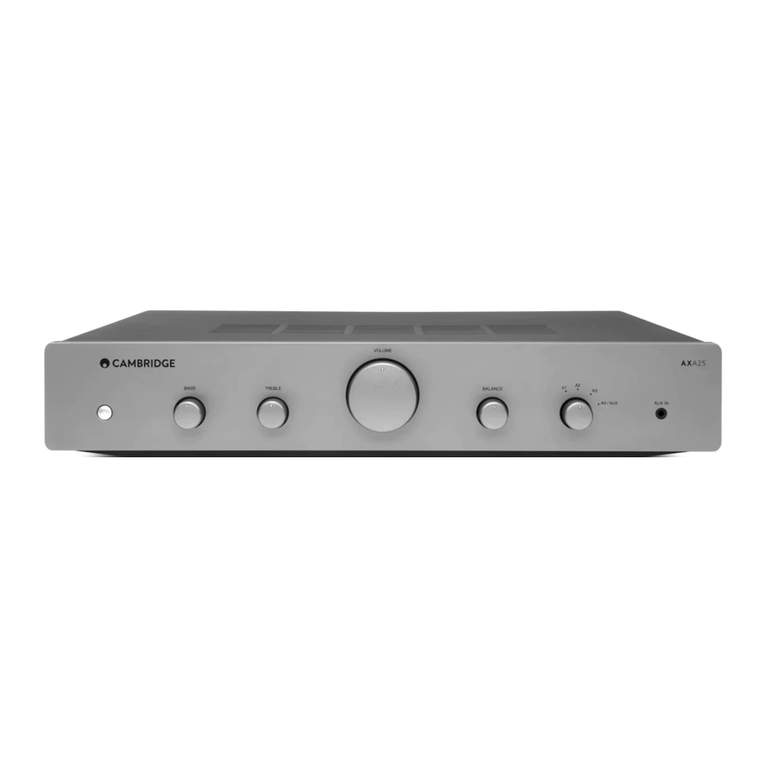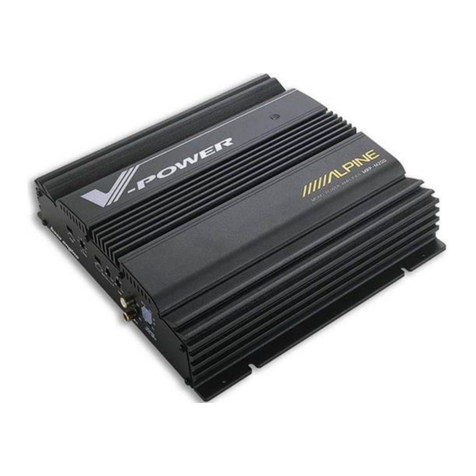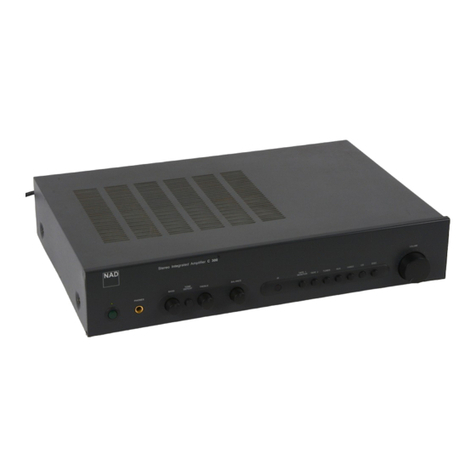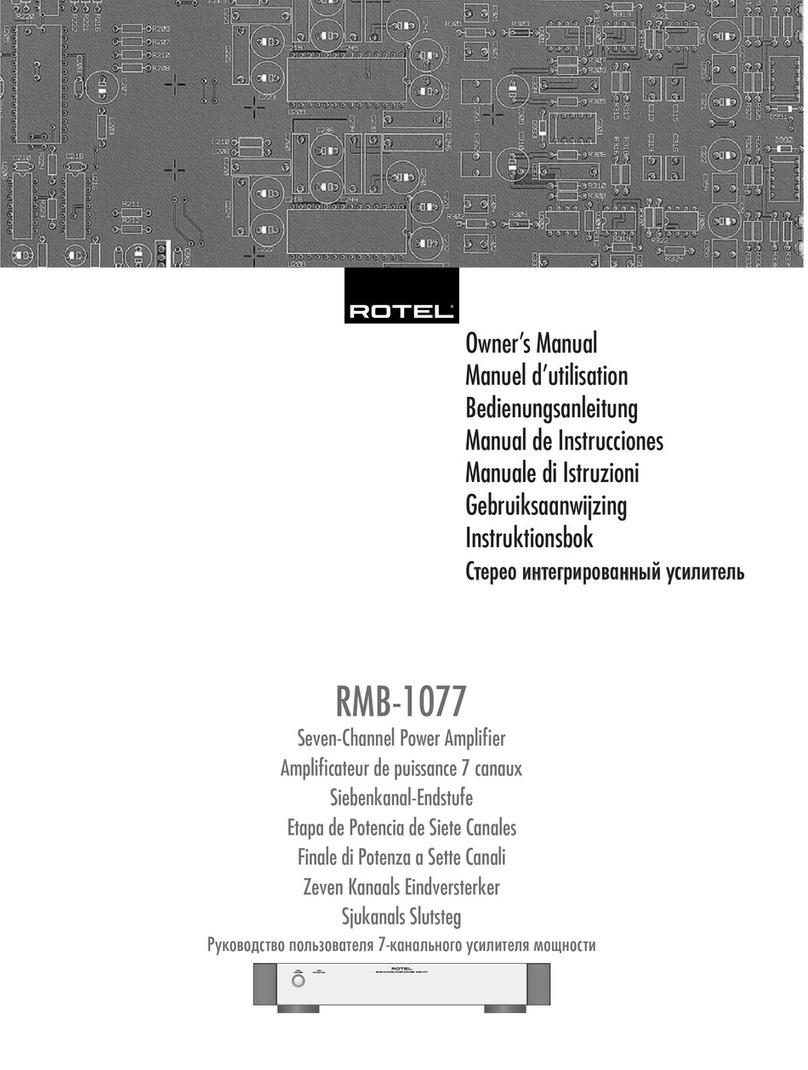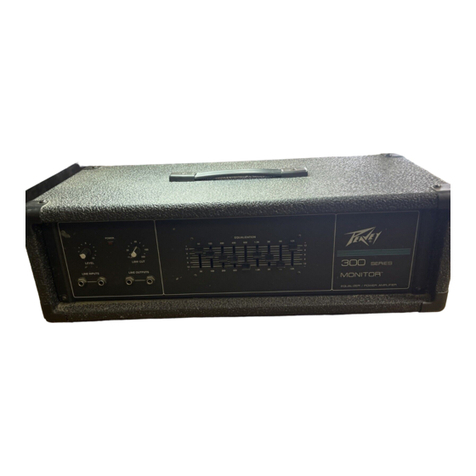
The Class-I Amplifier
device is biased off. In turn, when the signal goes
negative, the positive device biases off while the nega-
tive device turns on and conducts the negative portion
of the signal.
This configuration provides much greater efficiency
than class-A. The problem with class-B is that it can
create distortion at the zero-crossing point of the wave-
form, making it unsuitable for precision amplifier appli-
cations.Improvementstoandvariationsofclass-Bhave
been developed to solve the crossover-distortion prob-
lem, and many are in common use today; however, all
operate under the push-pull and time-alternation para-
digms.
All amplifier classes have theoretical limits to their effi-
ciency, meaning they all waste a portion of the energy
they draw from the AC mains supply. Dissipative de-
signs such as class-A, class-B and other variations,
have theoretical limits well below those of “switching”
designssincetheyoperateinthatregionbetweencutoff
and saturation. This lower efficiency may not be a
particular problem with lower power applications; how-
ever, it can be a major factor in large amplifiers, and
when several amplifiers are being used in an applica-
tion. AC mains power may be limited and/or expensive
to supply, and excessive heat created by dissipative
amplifierscanalsobeinconvenientandcostlytodealwith.
PWM
PWM(PulseWidthModulation)hasbeen used for years
in non-precision amplifiers to achieve very high effi-
ciency. A PWM converter modulates the analog signal
onto a fixed-frequency carrier wave, creating pulses
THE TIME-ALTERNATION PROBLEM IN PWM
The primary drawback to using previously existing
(class-D) PWM technology in a precision, high-power
audio amplifier output stage has been that in order to
keepdistortion sufficiently low, accurate timingcircuitry
isabsolutelycritical.Eventheslightestvariationintiming
cancausebothpositiveandnegativeswitchingdevices
tobe onatthesame time,allowinghigh“shoot-through”
current to destroy the output circuitry. In essence, the
time-alternation paradigm works well for dissipative
amplifiers, but not so well for switching ones.
Crown invented a highly reliable PWM amplifier output
stage that produces very little audible distortion, and
solves the reliability challenge. This was made possible
byadapting,forthefirsttimeinamplifierdesign,thevery
opposite of time alternation.
CLASS-I OPERATION
The push-pull paradigm is part of class-I but the time-
alternation paradigm is not. In class-I, two sets of
switching output devices are arranged in a “parallel”
fashion and operating balanced in time, with both sets
sampling the same input waveform. One set is dedi-
cated to the positive current portion of the waveform,
andtheothertothenegativecurrentportion.Whenthere
is no signal applied, or when a signal varying in ampli-
tude reaches the "zero crossing" between positive and
negative,theswitchingdevicesarebeingturnedonand
off simultaneously with a 50% duty cycle. The result is
the formation of two balanced and canceling high-
frequency output currents with no net output at the no-
signal condition. The two output currents are said to be
“interleaved,”andclass-Iisnamedfromthisinterleaved
characteristic.
To produce a positive output signal, the output of the
positive switching device is increased in duty while the
negative switching device is decreased by the same
PWM Sampling of an Analog Waveform
that vary in width depending upon the amplitude of the
signal's waveform. This creates a “sampling” of the
signal, which is then converted back to analog to drive
the load. The output devices “switch” between fully on
(saturation) and fully off (cutoff) states, so they waste
very little energy.
Class-I Switches, Signal at Zero Amplitude






